
The problem to be solved by science is to discover the relationship between definite facts and phenomena in nature, and to establish theories to link facts and phenomena; science is mainly dealing with unknown areas.
It is currently known that NASA will land near the south pole of the Moon as part of the Artemis III mission, scheduled for 2024. But this calendar tight, imposed by the Trump administration, could well cause the agency to revise its plans. In December 2017, President Donald Trump signed a directiv
A team of astronomers announces that they have unearthed the very first candidate exoplanet in another galaxy. This potential world, which has not yet been confirmed, would evolve in a binary system 23 million light years from Earth. Since the detection of the first exoplanet in 1995 by astronomers
As part of the Artemis program to soon send men to the Moon, NASA wants to use 3D printing to build future rockets. Currently, the agency is conducting promising tests, the results of which are not yet fully known. Print the heaviest and most expensive elements In 2024, NASA wants to send the next
The start-up Astrobotic will send its first robot to the Moon in 2022. Named MoonRanger, the rover will aim to search for traces of water at the pole south, anticipating the arrival of the next astronauts scheduled for 2024. It will have escaped no one that NASA wants to send the first woman and a
A recent study suggests we rely on chitin in the exoskeletons of insects and crustaceans to make tools and build habitats on Mars. After the Moon, several public and private agencies aim to establish themselves permanently on Mars. To do this, we will then have to face many challenges. One of them
Two years ago, a team of researchers announced the discovery on Mars of a lake about 20 km wide buried under a thick layer of ice. The same team announces today the discovery of new bodies of liquid water. However, not everyone is convinced. A subglacial lake on Mars In 2018 a team of researchers s
By calculating the mass of hundreds of galaxy clusters, researchers have accurately estimated the amount of matter (baryonic and dark) contained in the Universe. Details of their work are published in The Astrophysical Journal . We have known for a long time that the Universe is made up of about 5%
NASA is about to make history once again. Next month, the OSIRIS-REx probe should indeed make its very first attempt to sample the asteroid Bennu. Back on Earth, these extraterrestrial materials can shed light on the history of the Solar System. Its almost the big day! Four years after its launch f
Jim Woodward has had a theory that can be used for space exploration since the 1990s. This theory, based on a formulation of the Mach principle, has been applied in the development of a novel thruster prototype. Nobody knows if this research is a simple illusion or the beginning of a real revolution
Rising temperatures, fires and pollution are having an increasingly pernicious effect on astronomical observations. A report warned a few weeks ago that satellite constellations now being deployed to provide broadband internet access could fundamentally change the way astronomers study the sky noct
Target shrinks. NASA and Roscosmos agency operators have indeed determined that the air leak, recorded on board the ISS since September 2019, is in one of the Russian modules of the station. However, it has not yet been precisely located. The ISS is not completely waterproof. The structure installe
Astronomers have managed to produce several snapshots of the activity of the M87 black hole photographed last year. The opportunity to appreciate the evolution of his ring of light. In April 2019, researchers from the Event Horizon Telescope (EHT) project unveiled a historic photo:that of a black b
Researchers using the Hubble Telescope have detailed the size and structure of the halo surrounding the Andromeda Galaxy. They found that it was already colliding with that of the Milky Way. Surrounding most galaxies is a huge spherical envelope of gas and plasma that spans thousands or even millio
Constellations of satellites now being deployed to provide broadband internet access could fundamentally change the way astronomers study the night sky, a report warns. Some recommendations have been listed in order to minimize their impact. A sky full of satellites To get the internet, we depend o
Researchers are currently working on a project to explore the lakes and seas of liquid hydrocarbons on Saturns moon Titan. If approved by NASA, such a mission could be launched in the 2030s. An intriguing moon At 5150 kilometers wide, Titan is the second largest moon in the Solar System, just behin
Seven billion years ago, two massive black holes united as one. The latter would be of intermediate mass, an elusive object class. LIGO (USA) and VIRGO (Italy) are the two largest gravitational wave detectors in the world. In September 2015, these two instruments detected their first ripples in the
Astronomers have isolated numerous deposits of hematite on the surface of the Moon. This is a surprising discovery since our satellite is devoid of oxygen. Hematite on the Moon Hematite is a rust-like type of oxidized iron that forms when iron reacts with oxygen . However, unlike our planet, the Mo
Shunting an electron beam at spacesuits could blast off abrasive dust particles found on the Moon. The technique could prove very useful for future ARTEMIS missions. From the Apollo missions, we know that the main danger when you are on the lunar surface is regolith. These are, very roughly, tiny,
Endowed with a rare plasticity, cats helped change the behavior of astronauts in space. The understanding of the movement of cats has notably allowed an evolution with regard to movements in weightlessness. A particular discipline Its no news, cats have the exceptional ability to correct their body
New detections of iron-60 in marine sediments suggest that our planet has been traveling for 33,000 years through a cloud of gas and dust from the explosion of a supernova. As the Earth revolves around the Sun, our Solar System also drifts through the Milky Way, rotating once every 225 to 250 mil
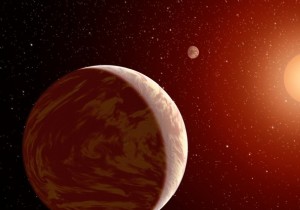 New radio technique reveals four possible exoplanets
New radio technique reveals four possible exoplanets
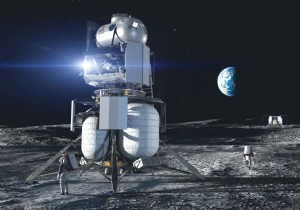 Blue Origin ready to "sacrifice" two billion dollars to go to the Moon
Blue Origin ready to "sacrifice" two billion dollars to go to the Moon
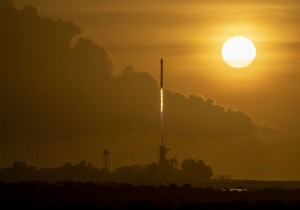 Europe wants to compete with SpaceX with a reusable launcher
Europe wants to compete with SpaceX with a reusable launcher
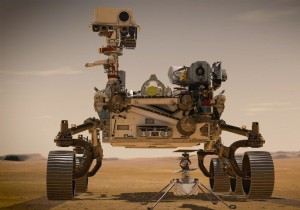 March 2020:All about Ingenuity, the NASA helicopter that will mark history
March 2020:All about Ingenuity, the NASA helicopter that will mark history
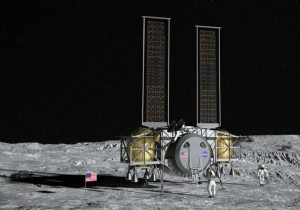 Artemis program:NASA delays the choice of its lander
Artemis program:NASA delays the choice of its lander